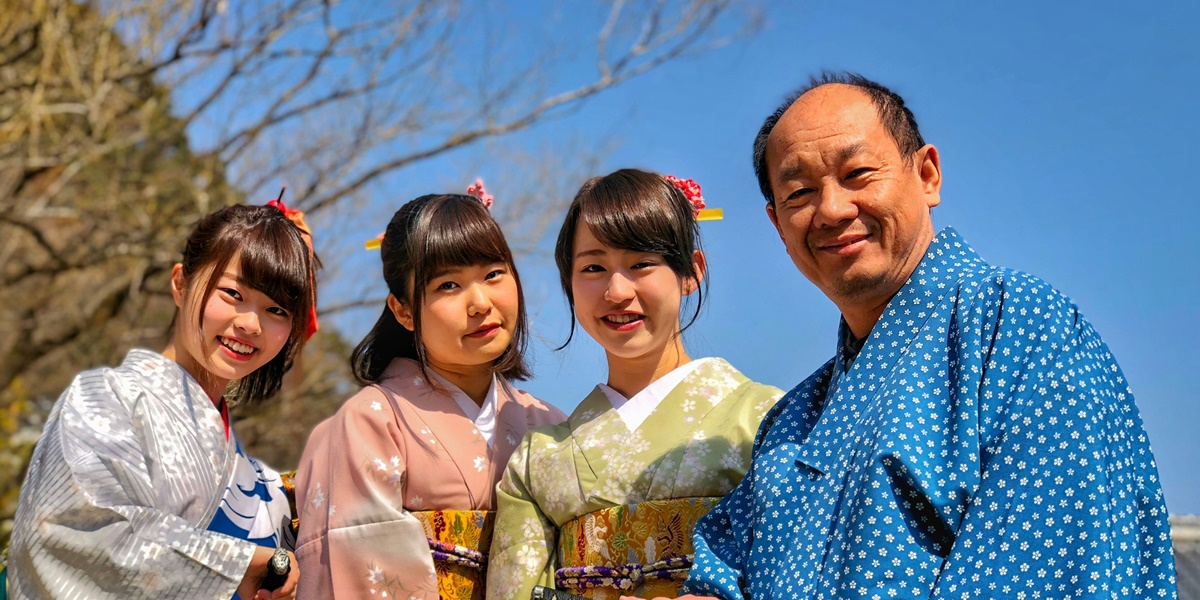Getting to Know Hiragana Japanese Letters, Know the Differences with Katakana and Kanji
Curious, what are the hiragana letters in Japanese and what are their functions? To find out, just read the following review.

Kapanlagi.com - Japanese has become one of the increasingly popular foreign languages to learn nowadays. When learning Japanese, it is important to understand its culture, including its customs in expressing gratitude. In Japanese, the common expression of gratitude is conveyed through the phrase "Arigatou gozaimasu". However, when someone says "Arigatou gozaimasu", how do you respond with "thank you back" or "you're welcome"?
Currently, the ways to express "thank you back" in Japanese are still rarely discussed. This causes many people to not know the proper way to respond to expressions of gratitude or "Arigatou gozaimasu". However, in Japanese, there are actually several ways to say "thank you back" or "you're welcome" in response to "Arigatou gozaimasu".
Curious about how? To find out, let's directly take a look at the following discussion.

Douita Shimashite (credit: unsplash)
Douita shimashite is one of the common responses used to answer "Arigatou gozaimasu" with the meaning of "you're welcome" or "same to you". More specifically, this expression actually means "no need to thank".
This expression is usually conveyed when feeling that someone doesn't need to thank for the action or help given. It could be that the help or action done is considered normal to do.
In terms of daily usage, "Douita shimashite" is classified as a formal expression. Therefore, it is suitable to be addressed to older people or superiors in the workplace.
Example:
A: "Doumo arigatou gozaimashita!" (Thank you very much!)
B: "Douita shimashite." (You're welcome or "no need to thank")

Kyoushuku de Gozaimasu (credit: unsplash)
Another expression to say "thank you back" or "you're welcome" as a response to "Arigatou gozaimasu" is "Kyoushuku de Gozaisimasu". Literally, this expression actually means "it has become my obligation". Therefore, this expression can be used as a response to Japanese expressions of gratitude.
In terms of daily usage, "Kyoushuku de Gozaimasu" tends to be formal, so it is more suitable to be addressed to older people or superiors in the workplace.
Example:
A: "Okage sama de tasukarimashita." (Thank you, I was very helped.)
B: "Kyoushuku de gozaimasu." (It has become my obligation.)

Enryo Shinaide (credit: unsplash)
The fourth variation to respond to "Arigatou gozaimasu" is "Enryo Shinaide". The expression "Enryo shinade" can also be interpreted as "you're welcome" or "thank you back" in Japanese. However, literally, this expression means "Don't be shy" or "Don't hesitate".
In terms of everyday usage, the Japanese expression "thank you" (Enryo shinade) is also considered formal. This means that it is more suitable to address older people or superiors in the workplace.
Example:
A: "Yushoku arigatou gozaimasu." (Thank you for dinner.)
B: "Enryo shinaide, Mashima-kun." (You're welcome, Masima, or Don't hesitate, Mashima.)

Kochira Koso (credit: unsplash)
Kochira koso is an expression used to respond to "Arigatou gozaimasu" and means "you're welcome" or "thank you back". Additionally, this expression can also mean "I should be the one thanking".
This expression emphasizes the mutual gratitude between two parties who help each other. In daily usage, "Kochirakoso" is considered a semi-formal expression, so it is suitable for friends of the same age.
Example:
A: "Yamada-san, kite kurete arigatou gozaimasu." (Thank you for coming, Yamada-san.)
B: "Kochira koso. Kekkon omedetou gozaimasu." (You're welcome. Congratulations on your marriage.)
Those are some variations of Japanese expressions for "you're welcome" or "thank you back" in response to "Arigatou gozaimasu". Hopefully, it is useful and can broaden your knowledge, especially for those who are enthusiastic about learning Japanese!
(kpl/psp)
Cobain For You Page (FYP) Yang kamu suka ada di sini,
lihat isinya
Curious, what are the hiragana letters in Japanese and what are their functions? To find out, just read the following review.
Anime ISEKAI OJISAN is an anime from 2023 that has attracted a lot of attention from anime lovers, especially the isekai theme. Here is the synopsis of the anime SEKAI OJISAN, complete with a list and explanation of its characters.
Whether it's live action or animation, Disney film recommendations bring positive and inspirational messages. Check out the recommendations here, KLovers.
And here are some recommendations for anime about orphanages that touch the heart with themes of strength, friendship, and hope in the midst of life in an orphanage.
The BLACK CLOVER anime presents strong and colorful characters. Here is a complete list of BLACK CLOVER anime characters along with an explanation of their powers.
In the world of anime, male characters with yellow hair often become the center of attention due to their striking appearance and diverse personalities. Here is a list of the most popular yellow-haired male anime characters.
These feared anime characters bring fear and tension in every appearance. Let's check out the list of the scariest anime characters as villains.
In this article, Kapanlagi will provide recommendations for breathtaking diving anime. Here is a list of recommendations for diving anime that can provide healing.
These JUJUTSU KAISEN anime characters have mysterious powers and strong personalities. Here is a list of anime characters in JUJUTSU KAISEN that is complete with character explanations and their strengths.
Curious about the variations of "I love you" in Japanese? To find out, just read the following review.
For those of you who want to follow this anime, you can read the synopsis of the anime 86 EIGHTY SIX for Part 1 and 2, as well as the special episodes. Let's take a look at the story of the anime 86 EIGHTY SIX through the following synopsis, which is full of conflicts that permeate this pressure-filled world.
Curious, what are the variations of "apa kabar" in Japanese language? To find out, just follow the following review.